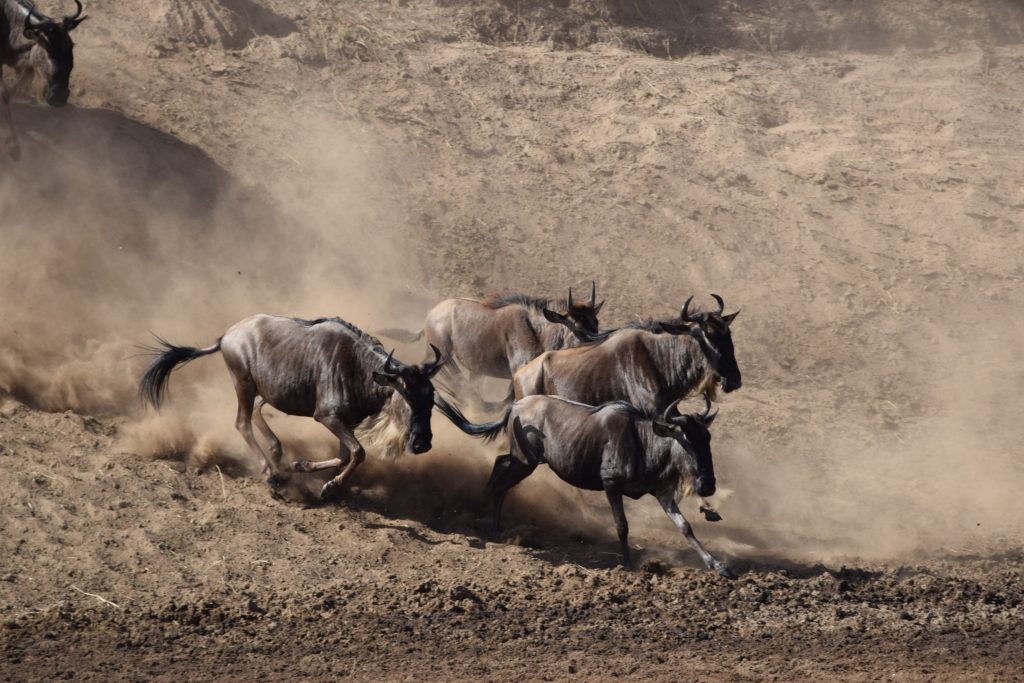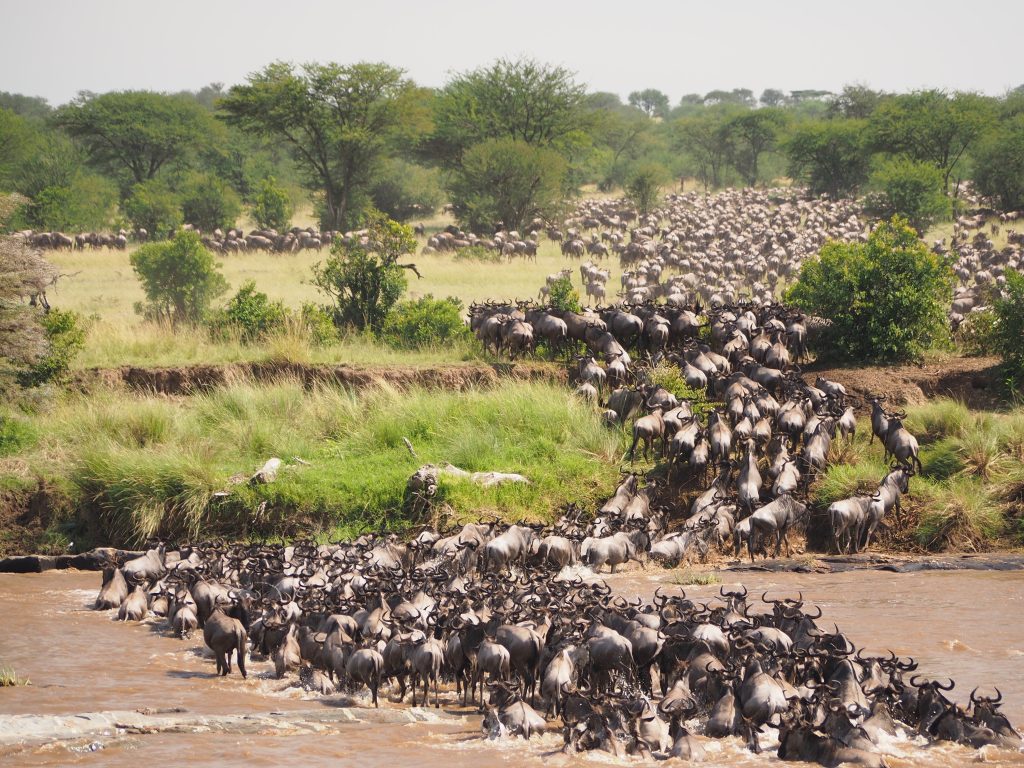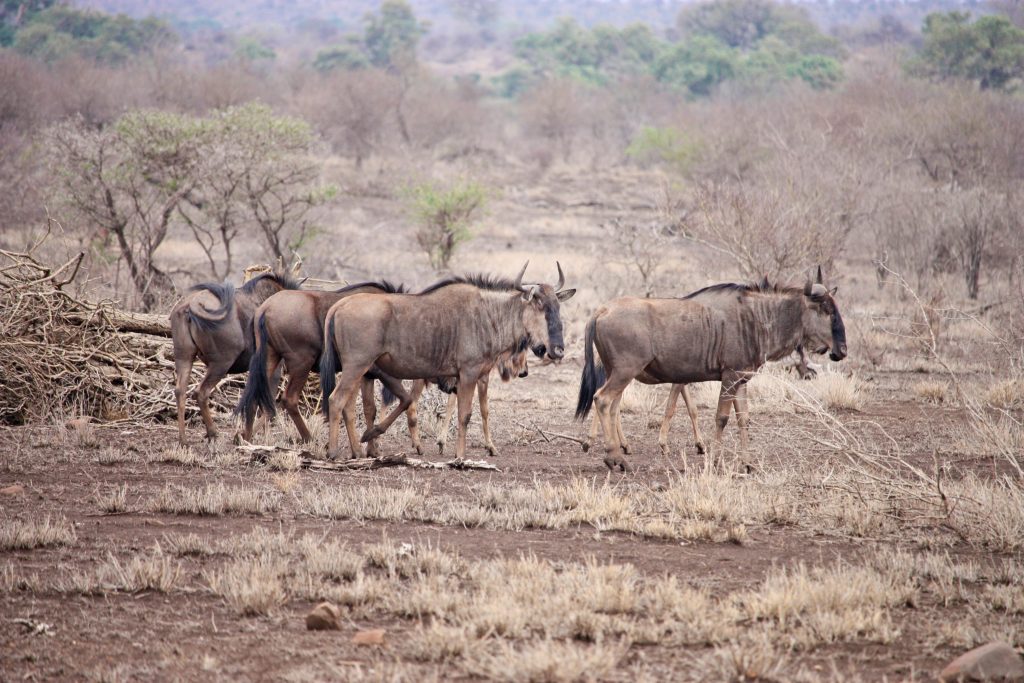The Great Wildebeest Migration.
The Great Wildebeest Migration is a natural phenomenon that occurs every year in Africa. It is one of the most breathtaking events in the world, where millions of wildebeests, zebras, and other herbivores migrate from the Serengeti in Tanzania to the Masai Mara in Kenya. This event attracts tourists from all over the world, and it’s not hard to see why. In this blog, we’ll dive deeper into what the Great Wildebeest Migration is, why it’s so special, and how you can witness it for yourself.
What is the Great Wildebeest Migration
The Great Wildebeest Migration is an annual migration of millions of wildebeests, zebras, and other herbivores in East Africa. It takes place between the Serengeti National Park in Tanzania and the Masai Mara National Reserve in Kenya. The migration is a never-ending cycle, as the animals move in search of greener pastures and water sources. It’s estimated that around 1.5 million wildebeests, 200,000 zebras, and 350,000 gazelles take part in this event.
Why is the Great Wildebeest Migration so special?
The Great Wildebeest Migration is a unique event for many reasons. First, it’s the largest mammal migration in the world. Second, it’s a natural phenomenon that occurs without any human interference. Third, it’s a chance to witness the circle of life in action, as predators such as lions, cheetahs, and crocodiles hunt their prey. Lastly, it’s a visual spectacle, as millions of animals move in a synchronized manner across the savannah.

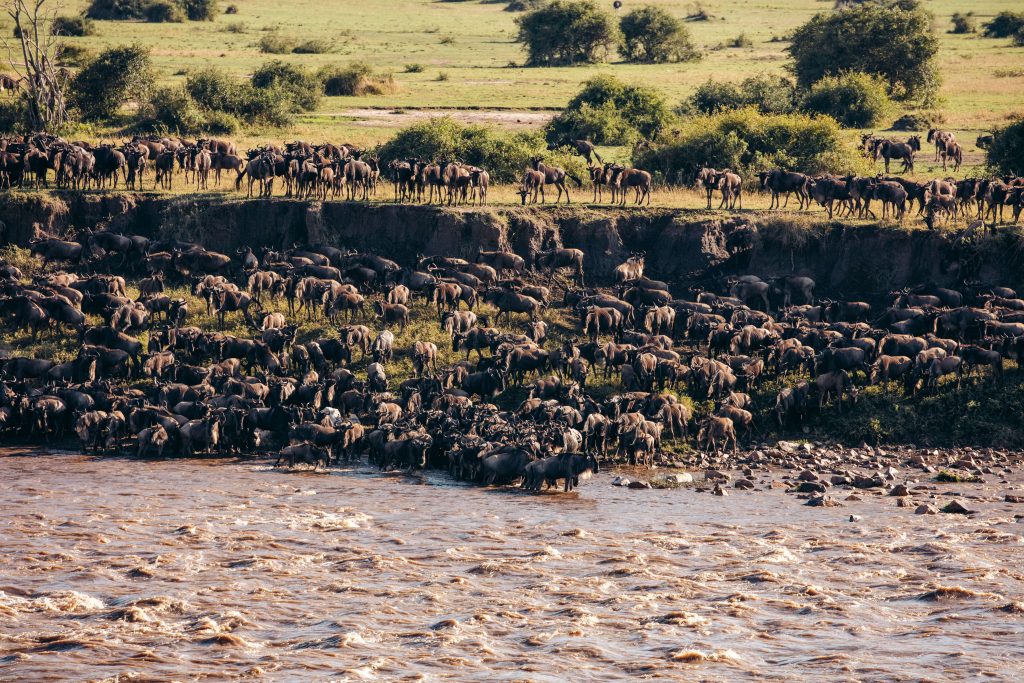
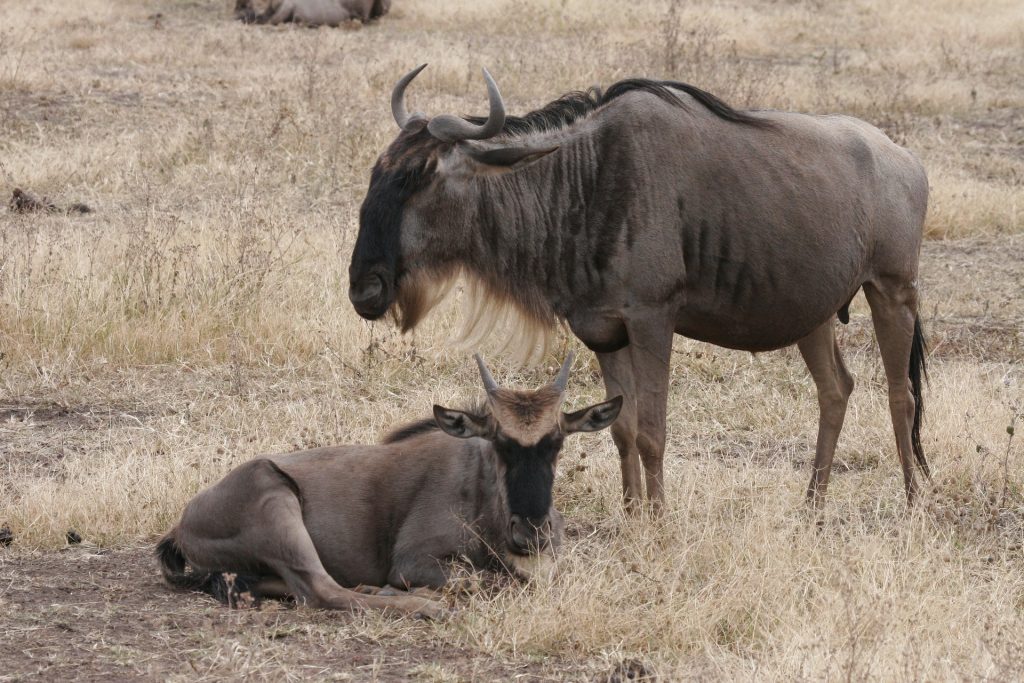
How can you witness the Great Wildebeest Migration?
If you’re planning to witness the Great Wildebeest Migration, there are a few things you need to know. The migration takes place between July and October, so plan your trip accordingly. You can either choose to visit the Serengeti in Tanzania or the Masai Mara in Kenya. Both offer different experiences, so it’s up to you to decide which one to visit. It’s recommended that you book a tour with a reputable company, as they will ensure that you have the best experience possible. Lastly, don’t forget to bring a good camera to capture the beauty of this event.
How the Great Migration moves throughout the year?
Whether the wildebeest are dropping calves or attempting to cross rivers while avoiding predators, the migration is constantly on the move throughout the year. Read on to learn where the Great Migration tends to be during different times of year, or click on a month below to jump that season of the migration:.
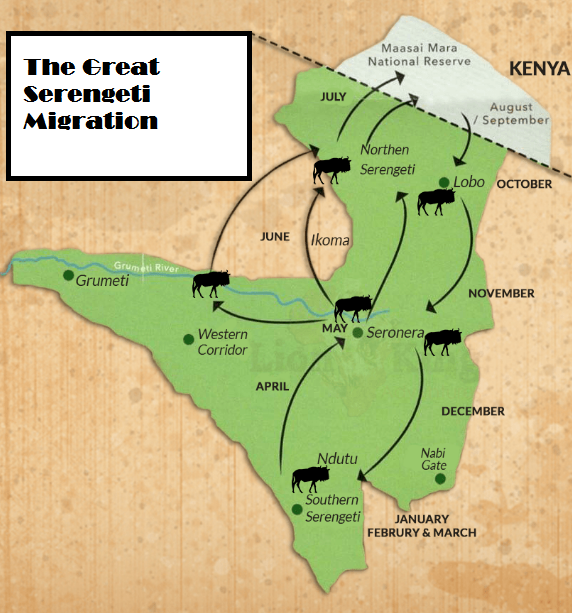
- The Great Migration in January, February and March
Every January, the wildebeest migration completes its journey south, migrating along the eastern edge of the Serengeti to the Ngorongoro Conservation Area. The area has rich, nutritious pastures, providing an ideal environment for the herd to raise their newborn calves ( Calving Season). The migration cycle has no definite beginning and end, but the natal period serves as a rational beginning. At the end of January or his February, the herds settle on the northern slopes of the Ngorongoro Crater Plateau and the short grasslands around Olduvai Gorge. During this short period of two to three weeks, about 8,000 new calves are born each day, for a total of about 400,000 calves. But this abundance of vulnerable young attracts a flood of predators, creating incredible spectacles of big cats on the hunt.
- The Great Migration in April and May
In February and March, the wildebeest give birth, and come April, the herds begin to move northwest towards the central Serengeti where fresher grass awaits. Thousands of zebras and smaller groups of antelope join them on this journey. By May, the wildebeest can be seen stretching for kilometers as they gather by the Moru Kopjes close to Dunia Camp, which is one of the few camps that offers migration viewing at this time of year. Mating season starts towards the end of May, and the male wildebeest engage in head-to-head battles.
As they leisurely continue their journey, grazing on the way, the movement gathers momentum, and the wildebeest start to mass in the Western Corridor of the Serengeti. At this point, the Ubuntu Migration Camp follows the migration to offer access for viewing the wildebeest as they cross the Grumeti River. Although not as grand as the Mara crossings, the spectacle is still impressive, with enough wildebeest to provide a feast for the Grumeti crocs. May is considered the low season at Ubuntu, but it offers great value for safaris since there are fewer tourists in the Serengeti, and wildlife viewings remain excellent.
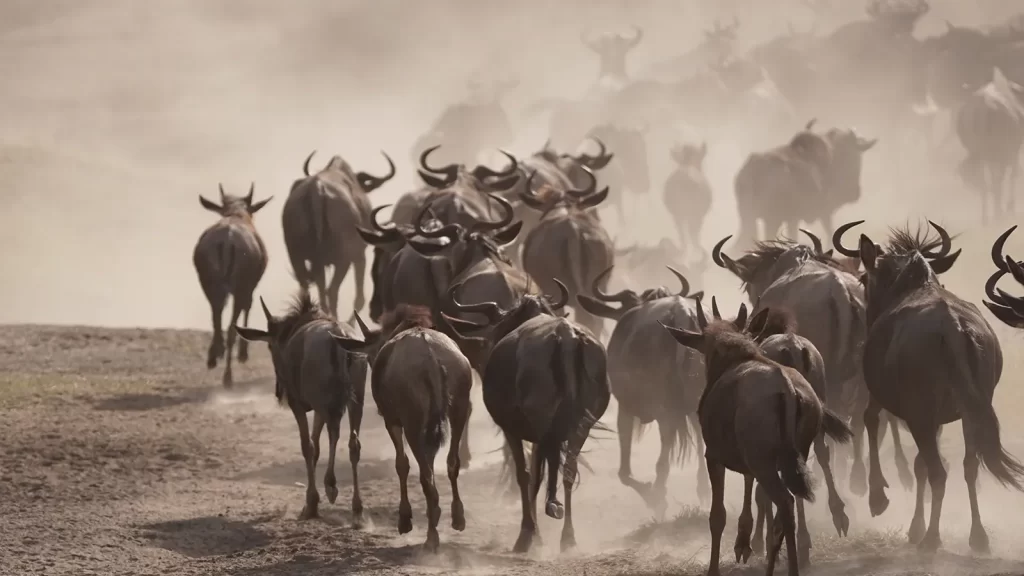
- The Great Migration in June and July
Starting in June, the onset of the dry season brings about a significant gathering of wildebeest in the Western Serengeti and on the southern banks of the Grumeti River. The first of many daunting challenges faced by each migrating animal is the task of crossing the crocodile-infested river.
As July approaches, the hundreds of thousands of wildebeest and zebras continue their journey northward along the western edge of the park, towards an even riskier barrier: the Mara River located in the north of the Serengeti. The river crossings that take place here are often considered one of the most thrilling wildlife events on the planet. Although typically beginning at the onset of high season in July, the timing of these crossings depends entirely on nature.
By July, the herds can usually be found in the Northern Serengeti, with Asilia’s mobile migration camps and Sayari Camp providing convenient access for visitors seeking a glimpse of this remarkable phenomenon.
- The Great Migration in August, September and October
By August, the herd has tackled the challenge of crossing the Mara River and has spread across the northern Masai Mara, with many remaining in the northern Serengeti. In years when the river is in full swing, panic and chaos at crossings, combined with waiting predators and rapids, can result in mass loss of life. But even in years with relatively calm waters, alligators take casualties and are ready to ambush any wildebeest reaching the other side, not to mention lions and other large predators that patrol the shore. is not one. In some places, populations are low, while in others, herds of animals can be seen moving non-stop for hours.
In September-October, the Wandering Pillars gradually moved east as major disruptions ended. However, Nu is again faced with the heavy waters of the Mara River and prepares to cross the river again for its return trip to the south.
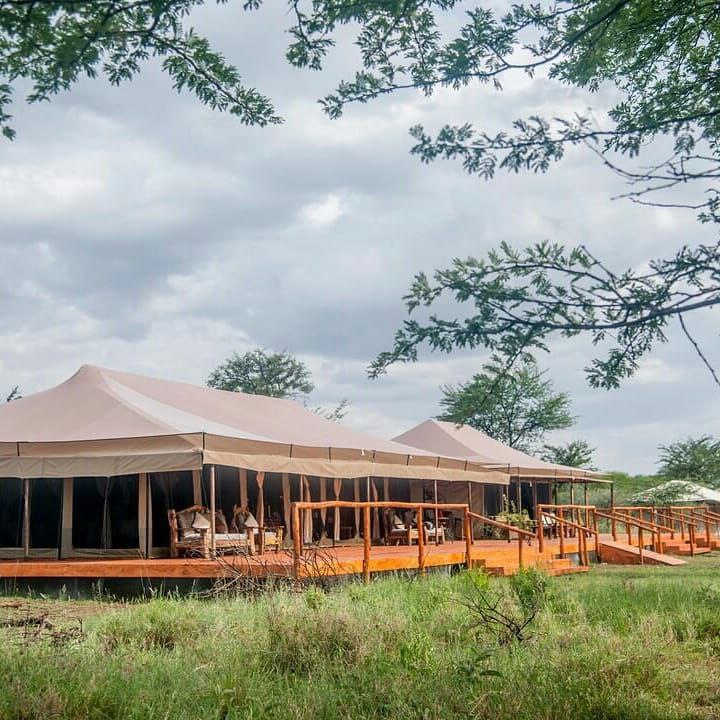
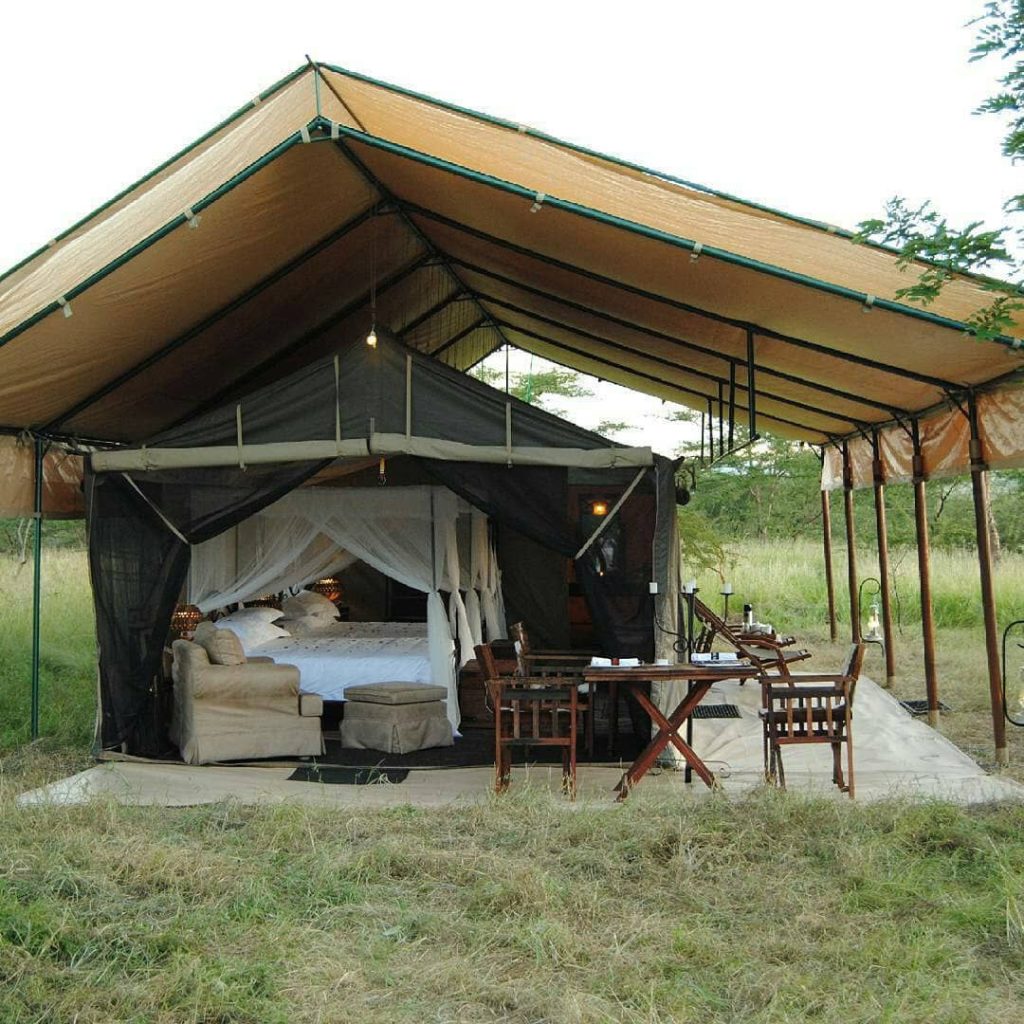
Best Accommodation During The Great Wildebeest Migration
- The Great Migration in November and December
In late October or early November, following a brief spell of rainfall in East Africa, the wildebeest embark on their annual migration from Kenya to the eastern border of the Serengeti, passing through the renowned Namiri Plains, where visitors can expect to witness impressive cheetah sightings. As December rolls around, the wildebeest have become a common sight in the eastern and southern regions, drawing in droves of their own kind, along with hundreds of thousands of zebras and other plains animals. This cycle repeats itself when the calving season commences once more
Conclusion
The Great Wildebeest Migration is a natural wonder that everyone should witness at least once in their lifetime. It’s a chance to see nature in all its glory, and to witness the incredible journey that millions of animals make every year. Whether you’re a wildlife enthusiast or just someone who wants to experience something new, the Great Wildebeest Migration is an event that you won’t regret attending. Plan your trip today and get ready for the adventure of a lifetime!
Serengeti Migration Safari Sample Itineraries.
Ready to plan a Great Migration safari?


